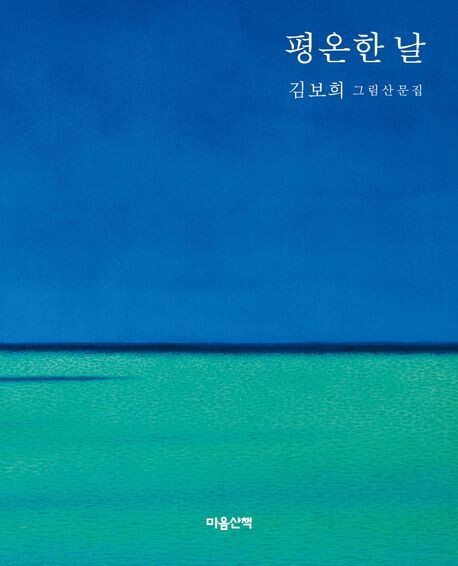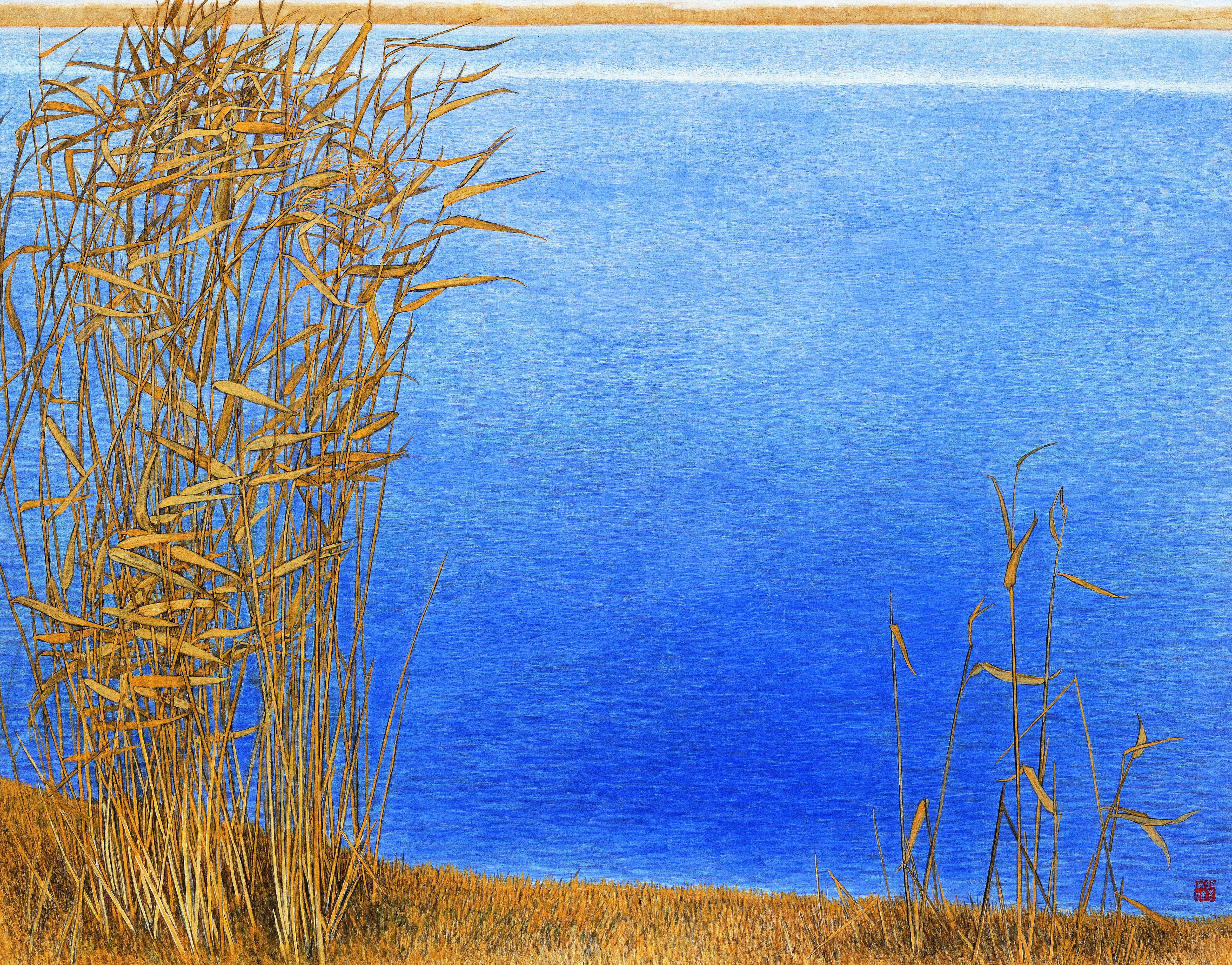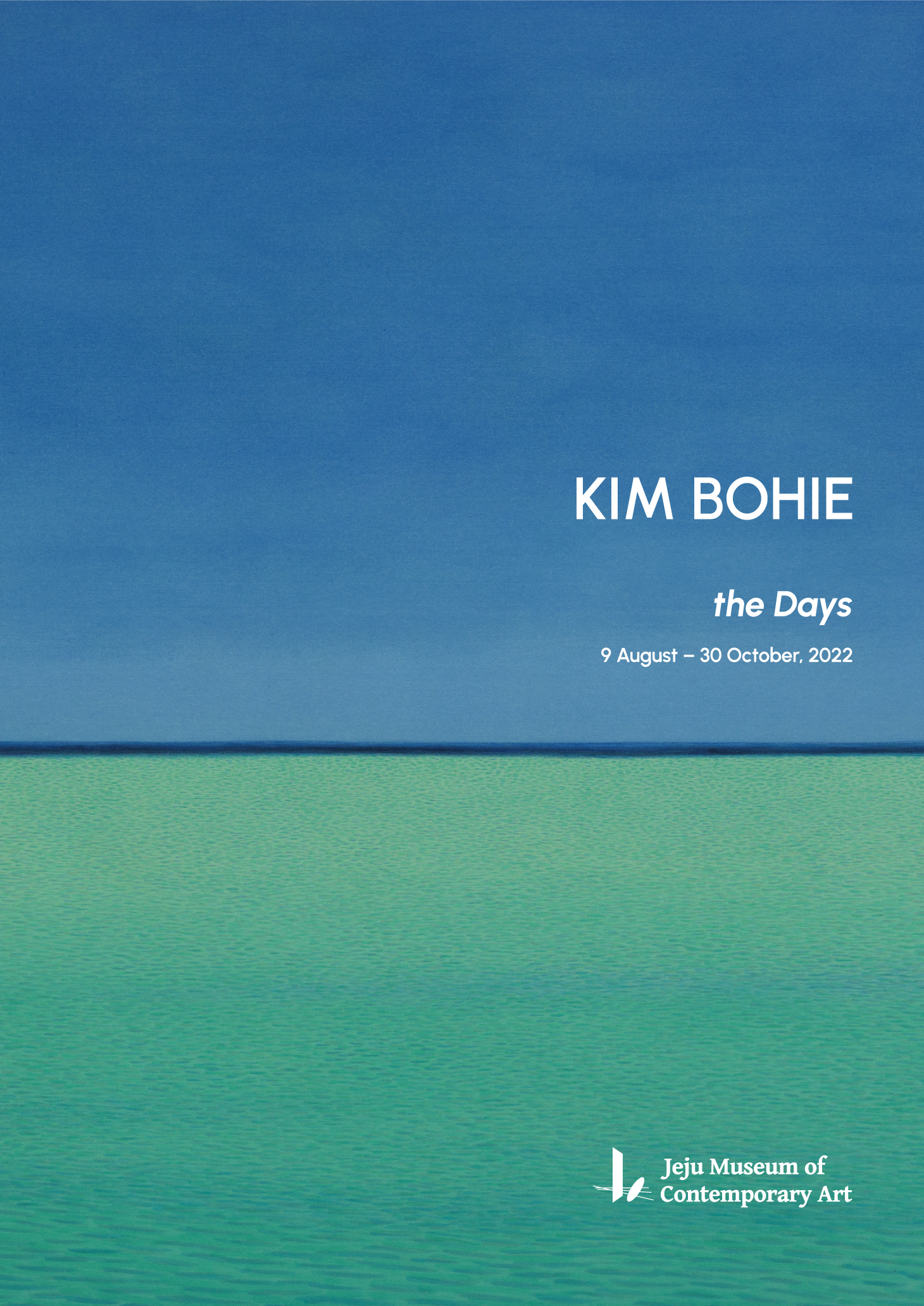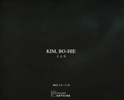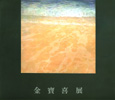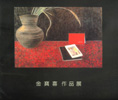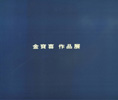2004.05.28 ~ 06.30 카이스갤러리 김용대 <색과 점으로 읽어가는 풍경>
색과 점으로 읽어가는 풍경_김용대 (부산시립미술관장)
1
김보희의 작업은 사실적인 인물이나 현실적인 풍경을 기초로 하여 몇 번의 변화과정을 거치었지만 사실을 그대로 재현하는 것이 아닌 것이다. 우리는 어떤 사물을 바라보는 그의 예민한 시선에 주목할 필요가 있다. 따라서 그의 작업은 사실성과 추상성의 미묘한 중간에 위치하면서 양쪽을 동시에 흡수하고 활용하는 태도를 보여주고 있다.
1986년 동덕미술관에서 보여주었던 작업은 자연의 풍경과 인물, 그리고 생활주변의 정물 등을 채색의 기법으로 표현한 것들이었다. 당시의 채색 인물화의 한 경향이었다. 그리고 그말미는 그러한 차분하고 단단한 소묘력을 바탕으로 풍경의 새로운 해석을 시도하기 시작했던 시기였다. 이때 보이는 자연의 풍경을 소재로 한 점묘기법의 채색화는 전통적인 동양미술의 문맥에서 볼 때는 상당히 특이한 양상을 지니고 있었다. 특히 <빛>(420x160cm) 이라는 작품은 매우 풍경을 추상화시킨, 그러나 실제 풍경에 근거한 묘한 이중성을 가지고 있다. 다시 말해 그 이중성은 실경에 가까운 풍경을 사진이나 재현의 미술에서 실천할 수 없는 서정성과 표현성을 지니고 있다. 하나의 단순한 풍경을 통한 의식의 침투가 진행되고 있음을 의미한다.
그러나 1995년 월전미술관에서 보여주었던 개인전에서 그의 작업은 다시 재현적 성격의 풍경화였다. 물론 당시 출품되었던 <바다>(180x100cm,1995)라는 작품은 다른 평범한 풍경화에 비해 점묘적 성격의 표현성을 지니고 있었다. 그러나 전체적인 느낌은 그 이중성의 양대 축에서 풍경적인 사실에 접근하고 있었다.
그리고 2000년 아트스페이스서울에서 가진 세 번째의 개인전에서 그는 서정적인 자연풍경의 기초 위에 점묘적인 기법의 표현성을 다시 등장시켰다. 당시 보여주었던 작업은 수묵 산수풍에 채색화적 기법을 혼용한 특이한 양상을 보여주었다. 이 점은 네 번째 개인전에서 보여줄 김보희식 점묘화라고 이름 지을 수 있는 회화적 풍경화의 가능성을 예고하고 있었다. 그는 전통적인 동양적 시방식과 서양적 시방식의 두 가지가 혼용되어 생활에서 발견될 수 있는 상활 산수 같은 느낌의 작업들을 선보였다. 구도에 있어서 평원적인 시각과 부감적인 시각 등을 다양하게 활용하였다. 특히 <상(想)>(130x506cm, 2000)이라는 대작은 단순한 풍경을 띠고 있으면서 단색톤이 가질 수 있는 다양한 울림을 보여주고 있으며, 구도에 있어서도 전통산수화에서 변용되어 해석될 수 있는 부감 시점의 새로운 가능성을 보여주고 있다. 평원적인 시각으로 관습 되어 있는 우리의 시각을 ‘보이는 데'에서 ‘생각하고 아는 곳'으로 유도하고 있다. 이 시점이 바로 김보희의 상상력이며, 구도의 참신한 해석이 돋보이는 곳이다. 산은 검고 물은 하얗지만, 그것을 읽어내고 표현하는 그의 방법은 하나의 단색점에서 출발하고 완성되는 회화적 가능성을 읽게 하며, 이 점이 산수로서의 현대적 가능성을 확인시켜 주는 것이 되고 있다.
2.
2002년 갤러리 아트사이드에서 그의 작업은 또 하나의 전기를 맞이하게 되었다. 기존의 풍경을 소재로 하는 점에서는 변함이 없으나, 해석하는 방법은 현대 회화의 가능성으로서 ‘평면성'을 강하게 보여주고 있다. 소재로서의 자연은 어느덧 최소한의 이미지만 남기고 뒤로 물러가고, 하나의 ‘독립적인 평면'을 만들어 내었다. 심원, 고원, 평원, 그리고 원근법의 시점 등을 모두 떠나는 비재현적 특징을 지니면서 화면 자체에 몰두하게 되는데, 여기서 그는 ‘구성적 조형'이라는 단계를 만들게 되었다. 따라서 그의 화면은 변형과 재구성을 통하여 평면성에 의한 현대회화로서의 자격을 갖추게 되었으며, ‘검은' 색과 ‘붉은'색, ‘검은' 산과 ‘푸른'물, ‘검은'형태와 ‘밝은'면 등으로 구획된 최소한의 경지에 이르게 되었다.
이번에 보여주는 카이스갤러리의 개인전에서 그는 또 한번의 변모를 시도했다. 일반적으로 회화는 평면 안에서 이루어지는 하나의 과정으로 인지되어 있지만, 그의 작업에서 평면은 평면이 아닌 ‘이상한 묘미'를 전하고 있다. 그것은 노랑색과 검은색, 붉은색과 붉은색, 검은색과 하얀색, 검은색과 푸른색 등으로, 색 자체에 순수한 가치를 부여할 수 있는 ‘색의 자율성'을 의미하고 있다. 이 자율성은 오히려 그가 초기에 시도했던 자연의 이미지가 강하게 부각되면서 자연을 깊이 읽어내고 있다. 더욱 단순화된 구도를 가지되 화면에 다시 태어난 제2의 자연으로서의 독자성을 획득하고 있다. 따라서 그의 색은 이제 하나의 가치를 가지게 되었으며, 그 가치는 자연에 대한 개념을 다시 상기 시키면서 매체라는 무기물에 하나의 생기를 불어넣고 있다. 나아가 화폭의 측면까지 그림을 연장시켜 오브제적이니 회화를 시도하고 있는데, 이것은 평면에 대한 또 다른 확장의 시도로 보인다.
그러나 그가 견지하고 있는 커다란 맥락은 단순화에 의한 평면성의 획득, 소화되고 의역된 풍경으로서의 현대적 산수, 색감에 대한 자율성의 부여, 그리고 그것을 수행하는 ‘점묘의 반복되는 리듬'으로서의 현대회화이다.
Reading Landscapes through Colors and Dots_Yong Dae Kim (Director, Busan Museum of Art)
1.
The work of Bo Hie Kim bas gone through several phases of change based on realistic human figures or landscape, but nevertheless, it is not a direct representation of reality. It is necessity to note Kim's keen senses in observing certain objects. Kim's work positions itself delicately between the boundaries of reality and abstraction It absorbs and uses both sides at the same time.
The work Kim exhibited at the Dongdeok Art Museum in 1986 focused on expressing natural landscapes, human figures and common still life objects using conventional color techniques. The tendency of her work of human figures resembled that of the painting style that was commonly seen in contests or the popular trend of colored portraits of the time. It was during this period that the artist began to try new interpretations of landscapes, based on her calm and solid drawing skills. The colored paintings of natural landscapes, but also based on the actual scenery. This duality contains lyrical and expressional characteristics, which cannot be executed in photography other representational art forms. This means that through a simple landscape, a process of penetration into the consciousness takes place.
However, in Kim's solo exhibition in 1995 at Weoljeon Art Museum, her work again consisted of representational landscapes. Undoubtedly, works such as “Ocean”(180x100cm, 1995) contained expressional characteristics in comparison with the other ordinary landscapes. But the overall impression was that the artist was going toward realistic landscape, among the two axes.
In her third solo exhibition in 2000 at Artspace Seoul, Kim returns to expressional pointillism technique on the foundation of lyrical natural landscape. The works she presented at the time displayed peculiar characteristics of mixing traditional landscape painting with Korean ink and colored painting techniques. This was like a prediction of the possibility of what may be called the “Bo Hie Kim-style dot painting”, which was to be shown in her fourth solo exhibition. In this exhibition, works that resembled common Korean landscapes were displayed, combining traditional Asian visual methodology and Western visual methodology. In terms of composition, the artist used diverse perspectives including horizontal and bird's-eye views. Particularly, the large work “Sang(mind)”(130x506cm, 2000) demonstrated the diverse emotional resonance of monotone, while still being attached to the simple landscape. It also presents a new possibility of the bird's eye view in composition, which may be interpreted somewhat differently in Korean traditional painting. The work leads our view, which is bound to a customary horizontal perspective, from a “place of seeing” to a “place of thinking and knowing”. This perspective is the characteristic that lies in the imaginative power of Bo Hie Kim, and where the fresh interpretation of composition is emphasized. Though the mountains are dark and the water is white, the artist's method of reading the information and expressing it begins with a single dot and moves toward completion, opening a new possibility of painting. This is what confirms the contemporary potential within the traditional landscapes.
2.
A new turning point is met at Kim's exhibition in 2002 at the Gallery Artside. In spite of the artist's familiar method of using existing landscapes as her subject matter, the way in which she interprets the objects, demonstrates strongly, a characteristic of “flatness”, which is viewed as a new possibility of contemporary painting. Nature as subject matter has gradually dropped back, remaining minimum images, and creating an “independent plane”. The non-representational characteristics, which part from all viewpoints of depth, vertical and horizontal viewpoints, and Western laws of perspective, carry non-figurative elements that make the spectator absorbed in the picture itself. It is here that the artist creates the stage of “compositional formativeness.” Thus, her frame equips itself with the qualifications of contemporary painting through transformation and recomposition, and reaches the state of division between black and red, black mountain and blue water, dark shapes and bright surfaces.
In her coming solo exhibition at CAIS Gallery, Bo Hie Kim attempts to make a transformation once more. Generally, painting is understood as a process that takes place within a flat plane, however, in Kim's work, the plane is not simply a plane, but transmits an “odd exquisiteness.” The combinations of yellow and black, red and red, black and white, and black and blue, indicate an “autonomy of color”, to which pure value can be projected. This autonomy strongly brings into relief the images of nature she tried to express in her earlier period, but also succeeds in reading the profoundness of nature. It acquires independence as a second nature, which was reborn on the pictorial plane, in spite of the even more simplified composition. Therefore, her color has gained value, and this value recalls the concept of nature as it blows life into the inorganic media. Furthermore, the artist extends the painting to the sides of the picture, attempting to make a new sort of extension in the plane of objective painting.
Nevertheless, the large context that Kim maintains, includes acquiring flatness through simplification; contemporary traditional landscapes that are ingested and interpreted in a broad sense, giving autonomy to colors, and contemporary painting, which is a “repetitious rhythm of dots” that these functions.
